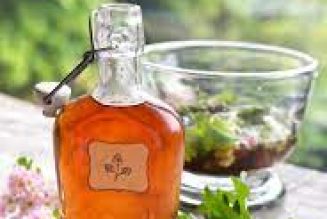As a way to control stress and uplift mood, aromatherapy is a terrific tool in your self-care arsenal.
Spellcraft often pulls aromatherapy in as a secondary element; the primary use of oils and herbs is for their energies, of course.
But it’s a pleasant bonus when your blends smell good as well.
The scent is one of the strongest memory triggers. No wonder; despite its apparent intangibility, scent is inescapable and deeply tied to emotion.
The scent receptors (on the olfactory nerve) are positioned right next to the amygdala and the hippocampus, the emotional centers of the brain.
Aromatherapy uses plants, flowers, or extracted oils to positively affect your physiological or physical state.
The gist of the science is that certain compounds stimulate different areas of the brain or the production of mood-affecting neurotransmitters.
It’s generally safe, although care should be taken when working with essential oils to not allow them to touch your eyes or the inside of the nose, and certain oils (such as cinnamon) shouldn’t be applied directly to the skin because of the potential for irritation.
Essential oils generally shouldn’t be taken orally, either; drinking them can damage your liver or kidneys.
Only do so if a qualified medical professional approves it after reviewing your current state of health, prescriptions, and over-the-counter medications.
Ingesting them can be especially dangerous because essential oils aren’t regulated the way medicine is; there is no way to confirm if the oil is what it says it is on the label, with no additives.
Consult a reliable guide to educate yourself on the guidelines and handling of specific essential oils, such as Roberta Wilson’s Aromatherapy:
Essential Oils for Vibrant Health and Beauty. Store your essential oils and oil blends in a dark place to keep the components from breaking down or going bad.
Common applications of essential oils include diluting them in water and heating them in a diffuser or spraying the diluted solution in the air, and diluting the essential oil in a carrier oil such as sweet almond, jojoba, or grapeseed oil and rubbing it on the skin.
A simple, efficient method is to place a drop of oil on a cotton ball and place it in a zip-top bag.
Carry it with you through the day, unzipping the bag to breathe in the scent when you need it.
Here are a few essential oils that are particularl useful in the practice of self-care. T
he magical and physical benefits are rolled into one.
♦ Clary Sage: Clary sage essential oil is used for optimism, happiness, relaxation, antianxiety, and confidence.
♦ Frankincense: Frankincense essential oil is used for meditation, clarity, and purification.
The woody scent is slightly spicy.
♦ Jasmine: Jasmine essential oil is used for meditation, clarity, and self-love.
The scent is floral but clean; it has a green undertone.
♦ Lavender: As detailed in earlier chapters, lavender is a wonderful self-care oil and herb.
It’s used for relaxation with a sedative effect, for calm and sleep.
♦ Lemon: Lemon essential oil is used for happiness, clarity, joy, and purification.
♦ Sandalwood: A sweet woody scent, sandalwood is often used in spiritual traditions. Sandalwood essential oil is used for meditation, relaxation without a sedative effect, purification, calm, and clarity.
♦ Ylang-Ylang: A sweet floral oil, ylang-ylang is used for relaxation and serenity.







